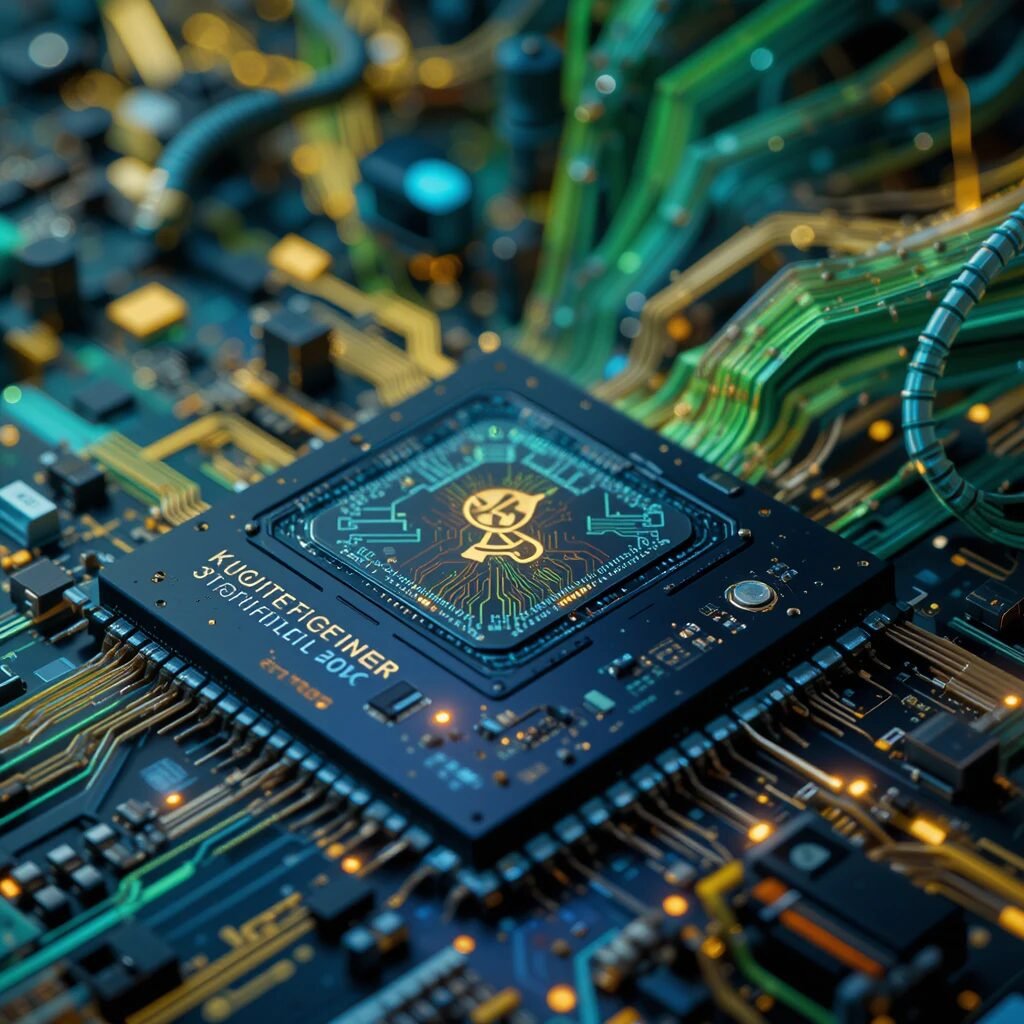Introduction to Local Intelligence
The integration of Artificial Intelligence (AI) on microcontrollers represents a significant advancement in data processing efficiency. Local AI refers to the use of algorithms to process and analyze data directly on the microcontroller, rather than sending information to an external server for processing. This technology is particularly relevant in fields such as the Internet of Things (IoT), robotics, and smart devices, where speed and energy efficiency are crucial.
Traditional cloud-based solutions often introduce high latency and increased energy consumption due to data transfer between the device and the cloud. In scenarios requiring real-time decision-making, such as processing sensor data, local processing proves advantageous by analyzing data directly on the device, significantly reducing response times.
Additionally, local AI offers major benefits in data security and privacy by minimizing data transmission. Sensitive information remains on the device, reducing exposure to cyberattacks that could occur during external server transfers. These aspects are especially critical in industries like healthcare and automotive, where data protection is a top priority.
Universities and research institutions play a key role in advancing local AI. These organizations collaborate to develop innovative solutions that enhance both performance and efficiency in microcontrollers. Through research and development, new approaches and technologies emerge, making AI implementation on microcontrollers not only possible but also optimized.
Technologies and Methods for Model Compression
Developing AI on microcontrollers requires innovative approaches to reduce model size. To shrink AI models down to just 4 kilobytes, several techniques and methods are employed to increase efficiency while minimizing energy consumption and memory usage. The most important methods include quantization, pruning, and architectural modifications.
Quantization refers to reducing the precision of numerical data within a model, typically converting floating-point values to integers, leading to lower memory usage. This method decreases computational complexity and energy consumption while maintaining acceptable accuracy. Implementing quantized models on microcontrollers allows for optimal use of computational resources.
Pruning, on the other hand, involves identifying and removing insignificant parts of a neural network to reduce model complexity and size. Neurons that have little impact on predictions are eliminated, which not only saves memory but also improves processing speed by requiring fewer computations for the same results.
Additionally, architectural modifications play a crucial role in model compression. By adjusting a model’s structure—such as reducing the number of layers or neurons—efficiency can be significantly improved without drastically affecting performance. These integrated techniques (quantization, pruning, and architectural modifications) work synergistically, forming the foundation for successful AI implementation on resource-limited devices like microcontrollers.
Flexible Responsiveness with Subspace-Configurable Networks
Subspace-Configurable Networks (SCNs) represent a groundbreaking AI technology, particularly for microcontrollers. These models are designed to dramatically improve responsiveness to varying inputs. A key feature of SCNs is their ability to process data variations dynamically without requiring separate models for each scenario. This not only enhances efficiency but also reduces memory requirements, which is critical for resource-constrained systems.
In practice, SCNs have achieved remarkable progress in applications like object detection and image classification. Studies have shown that SCNs can identify and classify multiple objects in real time without relying on external cloud resources. This efficiency is particularly beneficial in environments with limited network access and computing power. Implementing SCNs enables demanding tasks to be executed directly on microcontrollers, significantly improving response speed and overall performance.
Beyond immediate efficiency, SCNs also offer major adaptability advantages. In an increasingly dynamic world with constantly changing data, these networks can quickly adjust to different requirements. A successful example is autonomous robotics, where SCNs help address real-time challenges and make decisions based on current environmental variables. In summary, SCNs provide an innovative solution to enhance flexibility and efficiency in AI for microcontrollers, enabling major advancements across many applications.
Future Prospects and Application Areas
The integration of AI on microcontrollers opens up a wide range of future applications across nearly all areas of life. One of the most promising uses is precise localization for mobile units. Using AI algorithms, robots, autonomous vehicles, and wearable technologies can better and more accurately perceive their surroundings, leading to improved navigation and interaction.
Another exciting application is signal validation in keyless entry systems for vehicles. Here, AI can recognize patterns in user data, helping to detect unauthorized access attempts early. This not only enhances security but also reduces theft and misuse risks. AI plays a crucial role by analyzing and making real-time decisions on whether to grant or deny access.
Optimizing battery life in smart home devices is another notable application. AI can analyze user behavior and adjust energy consumption accordingly. These intelligent systems not only reduce power usage but also significantly extend battery lifespan, offering both economic and environmental benefits.
The potential of these innovative technologies is vast. Future products and services will increasingly benefit from collaboration between research institutions and industry. Through knowledge and resource exchange, creative solutions can be developed to fully harness the power of AI in microcontrollers, ultimately benefiting society as a whole.

 from Africa, Asia and United Nations here for your comfort in different languages, but you can click on our translator in different languages on our Website.
from Africa, Asia and United Nations here for your comfort in different languages, but you can click on our translator in different languages on our Website.
